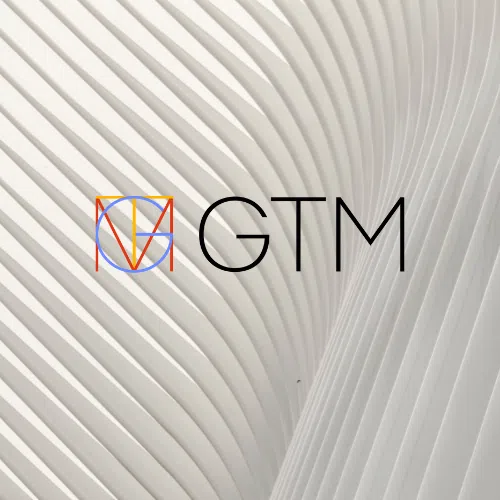Since the Tax Cuts and Jobs Act of 2017 went into effect, US multinational companies have been subject to a minimum effective tax on foreign earnings under the Global Intangible Low-Taxed Income (“GILTI”) regime. Now US and foreign Multinationals face the implementation of a Global Anti-Base Erosion (GloBE) minimum tax under OECD’s Pillar Two and must address complex issues.
In our recent webinar, Is Pillar Two GILTI as Charged? we walked through the similarities and differences between GILTI and Pillar Two, and how outcomes can differ based on how they conform with one another. Here, we answer some of the specific questions that came out of that session.
Q: How is the OECD Pilar Two timeline impacted, if at all, if the US is supposed to adopt substantially similar rules?
A: The OECD Pillar Two (also referred to as “GloBE”) Model Rules serve as a template for domestic GloBE rules.
The OECD’s aim is that the Model Rules will be converted into domestic law in the various jurisdictions during 2022. The Income Inclusion Rule (“IIR”) should become effective starting from 2023 and the Undertaxed Profits Rule (“UTPR”) from 2024 onwards.
The GloBE rules are not mandatory, but have been agreed upon as a “common approach”. This means that jurisdictions are not required to adopt the GloBE rules, but if they choose to do so, they agree to implement and administer them in a way that is consistent with the agreed outcomes set out under those rules. This methodology means that, if sufficient jurisdictions adopt domestic versions of the Model Rules, not only should the envisaged global minimum rate of 15% quickly become a fact for many in-scope multinational enterprises (MNEs), but it should also cause an incentive for other jurisdictions to implement these rules.
The draft Directive for the implementation of Pillar Two in the EU, which has not been adopted yet but is expected to be adopted in the coming months, now contains an extension of the deadline for implementing the GlobE rules in the EU Member States to 31 December 2023. This means that the IIR would enter into effect for fiscal years starting on or after 31 December 2023 instead of 1 January 2023, as initially proposed. The UTPR would apply for fiscal years starting on or after 31 December 2024. The European Commission argues that this amended timeline still falls within the agreed implementation timeline proposed in the OECD Model Rules (the IIR should become effective starting from 2023 and the UTPR starting from 2024).
There is no indication that the timeline for the GloBE rules would be impacted based on the US being required to adopt substantially similar rules. Countries that decide to implement the GloBE rules domestically and tax accordingly, are in principle free to do so as sovereign states (note that EU Member States would be required to adhere to the Pillar Two Directive agreement, when adopted, including the timeline agreed therein).
Q: Why is deferred tax limited to 15%?
A: The starting point for the Total Deferred Tax Adjustment Amount is the amount of deferred tax expense accrued in the financial accounts of a Constituent Entity if the applicable tax rate is below the 15% minimum rate; or, in any other case, such deferred tax expense recast at the minimum 15% rate.
The Model Rules use existing deferred tax accounts maintained by MNE groups to the greatest extent possible to simplify compliance. However, they require certain adjustments to protect the integrity of the GloBE Rules. One of these adjustments is using the lower of the 15% minimum rate or the applicable tax rate to calculate deferred tax assets and liabilities in order to prevent deferred tax amounts from sheltering unrelated GloBE income. Or, more simplified: The deferred taxes are only “worth” 15% if used for the Covered taxes for minimum taxation purposes.
Q: What are the implications for the US and multinational companies if the Build Back Better Act is not implemented this year, and therefore GILTI does not conform with Pillar Two?
A: The short and simple answer is that if GILTI does not conform to Pillar Two in 2022, there is no implication since Pillar Two is expected to be effective in 2023.
If we forward to 2023, assume that Pillar Two is now effective. If GILTI is not conforming with Pillar Two, we will need to look at the issue under two options:
- US is the ultimate parent of the multinational company (“US Multinational”)
- US is in a Sandwich structure between a foreign parent with foreign subsidiaries under the US (“US Sandwich”).
Under the US Multinational scenario, Pillar Two may be applied at a foreign subsidiary level below the US. The problem under this scenario is that the Pillar Two tax at the lower level may not be creditable for US tax purposes resulting into double taxation. It is also possible that under Under-Taxed Profit Rule (“UTPR”), the US may be subject to Pillar Two in other foreign country(ies) if the US effective tax rate is below 15% as illustrated in the presentation. However, UTPR is not effective until 2024.
Under the US Sandwich structure, there is a possibility that we have a Pillar Two tax at the ultimate foreign parent level and a GILTI tax at the US level. It is unclear whether the GILTI tax would be creditable under Pillar Two and would need to wait for further guidance. Similarly, it is also possible that the US may be subject to Pillar Two tax at the ultimate foreign parent if the US effective tax rate is below 15% as illustrated in the presentation but this time rather under the Income Inclusion Rules (IRR).
Q: Would the Biden Administration proposal for Book Minimum Tax be a Qualified Domestic Minimum Top-Up Tax (QDMTT) or would it have to be modified to be a QDMTT? In addition- Is state tax included in the Pillar Two ETR tax calculation or federal tax?
A: Let’s start with the last part of the question. State income taxes are included in Pillar Two effective tax rate since they are an income tax.
For the first part of the question, we should first revisit Biden’s 15% alternative minimum tax. First, under the proposal, Corporations (for the whole group,) with a 3-year average adjusted book income above $1 billion will be subject to this tax and $100 million in adjusted book income for the US group if part of a foreign multinational group. As a reminder, Pillar Two may apply to Corporations with Euro 750M in revenue. Therefore, we could have a gap between Biden minimum tax proposal and Pillar Two. So, in order to qualify as a QDMTT, the threshold would need to change.
In addition, the minimum tax would apply to book income, with certain preference adjustments, which is reported in financial statements. Again, it is unclear whether these preference adjustments would qualify under QDMTT. It is likely that Biden’s minimum tax would need to be modified, but that is not certain.
Q: If the US top company has a flat structure (e.g., five foreign subsidiaries owned by the US top company) would that require separate IIR calculations?
This response assumes that GILTI is not a Qualified IIR for Pillar Two purposes.
The flat structure described here does not mean that five separate IIR calculations would be required. This is a common misconception between the computation of the MNE Group’s jurisdictional ETR and the amount of Top-Up Tax on the one hand, and the charging mechanism on the other hand. We think this is best illustrated on the basis of an example.
- GloBE Income (on a jurisdictional basis and based on the net accounting income determined using the accounting standard that was used to prepare the Consolidated Financial Statements – which will be the standard of the US top company) = 10 million
- GloBE Tax = 1 million
- Jurisdictional ETR = 10%
- Top-Up Tax Rate = 5% (15% minimum rate -/- 10% ETR)
- Substance based carve out = 400k (percentage of jurisdictional tangible assets and payroll costs)
- Excess profits = 9,6 million (GloBE Income of 10 million less substance based carve out of 400k)
- Top-Up Tax = 480k (5% over excess profits)
Now that it has been established that a top-up tax is owed, the charging rules determine where the top-up tax should be paid. The main rule is the IIR, but the example assumes that GILTI is not a Qualifying IIR for Pillar Two purposes. The example structure also does not allow applying the IIR one or multiple tiers down (top-down approach), given that the structure is flat. The Undertaxed Payments Rule (UTPR) will take effect and allow all Pillar Two implementing countries to pick up a portion of the top-up tax in the form of a denial of deduction, or the recognition of deemed income, resulting in an increase of the tax due in the other implementing jurisdictions.
The UTPR rules provide that any remaining top-up tax is divided under an allocation key that is based on an implementing jurisdiction’s relative share of tangible assets and employees (on a 50/50 basis). It is not relevant whether the entities that get allocated a part of the top-up tax actually make deductible payments to a low-taxed group entity. Instead, all tax deductible payments made in a jurisdiction, including payments made to third parties, may potentially be denied under the UTPR in order to increase the jurisdictional ETR to the required minimum level.
Q: If the Build Back Better Act is not passed and current GILTI is non-conforming, will other countries get to apply the top up tax as an underpayment?
In principle, yes. That is the purpose of Pillar Two. Whether the US will allow that to happen, however, is a different story. There have been letters to Treasury posing the issue that they want to safeguard the US tax base (whether its own US income in the US or that of its foreign subsidiary under GILTI) to ensure that it is not taxed in other countries, but only in the US. The letters request Treasury to negotiate with the OECD on this matter. This issue is still developing, and there is more to come on this matter.
To learn more about GTM’s International Tax Services or to speak with someone who can guide you through the process, contact us.



